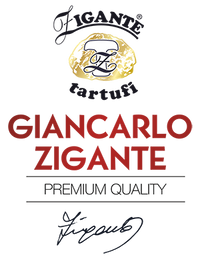Region
Green oasis worthy of the central position
Equally abundant in untouched natural beauties as well as in cultural heritage, central Istria is one of the most interesting Mediterranean regions
From city to small town
The centre of central Istria is Pazin, in spatial and administrative terms. It is a city whose natural and cultural treasures range from the deep Pazin cave, which inspired the grand “traveller to the centre of the Earth” Jules Vern, to the high positioned citadel Kaštel (today’s Ethnographic Museum), from which the earldom was once reigned. In addition to its heritage, the present day Pazin is organizing a number of events offering fun and interesting events the whole year through for its citizens, visitors and tourists.
Buzet is positioned in the centre of the fertile Mirna river valley. It is also known as the City of truffles because it is positioned in the very centre of the region abundant with that expensive underground fungus.


Not far from Pazin and Buzet, at the top of a hill, reins Motovun – a mediaeval town with cultural and historical heritage exceeding the walls surrounding it. Once the most important inhabited town in this region, is presently famous outside Croatian borders owing to the small yet big Motovun Film Festial, visited every year by approximately ten thousand film art lovers.
Also located in this region is Hum – the smallest town not only in Istria but worldwide as well.
From place to settlement
Not far from Hum is the prehistoric settlement Roč, today a protected cultural monument. Roč is considered to be the centre of Glagolitic activity.
Located more to the south, at the intersection of roads, is Žminj. The small settlement with great charm is offering every traveller an accommodation in old Istrian houses, traditionally prepared homemade meals and a direct contact with nature in the nearby woods, caves, vineyards and meadows.
The most southern settlement in central Istria is Svetvinčenat, a small medieval city dominated by the stone citadel Morosini - Grimani, one of the most significant Venetian buildings in Istria. D

Breath-taking natural beauty
Istria is a proof that nature presents us with premium fruits if we safeguard the treasures entrusted to us for use
This region is special due to the biological diversity, opulent flora and special microclimate characteristics. Natural processes in progress for many years enabled the unification of an exceptional flora and fauna world and thus Istria truly is abundant with wonders of nature. Among regions protected by the law these are natural reserves: National Park Brijuni, Nature Park Učka, protected landscape Limski zaljev, forest park Zlatni rt and ornithological reserve Palud, forest park Šijana, protected landscape Kamenjak and Motovun forest abundant with truffles.
Grey and Green Istria
Due to the flysch layers and the huge quantities of clay and its grey colour, central Istria is also known as Grey Istria. Since flysch layers are waterproof, the many streams have created numerous ravines through which rainfalls are descending. An important part of that region of Istria are the valleys of rivers Mirna and Raša with their tributaries, and their form is conditioned by the composition of rocks – in areas where softer flysch layers are predominant, rivers have a wide tributaries network while in areas with harder rocks rivers have incised deep and steep canyons. Due to the flourishing fauna, this area, especially the area surrounding Pazin and Buzet, is also known as Green Istria.
Water treasure
Owing to waterproof flysch layers, central Istria is not lacking water, and the diversity of its water treasures includes rivers, streams and lakes as well as many groundwater springs.
The most important surface watercourses are Mirna, Raša, Boljunčica and Dragonja as well as the subterranean river Pazinčica. Mirna is the longest Istrian river most abundant with water.

Fertile soil
Owing to the specific microclimate and the favourable influence of the river Mirna, the area of Motovun and its surroundings is very fertile. The terrain is most suitable for viticulture and olive-growing as well as for growing vegetables, but the most prevalent product are wines. The most often produced varieties are Istrian Malvazija, Muscat, Chardonnay, Grey and White Pinot, Teran, Merlot, Cabernet Sauvignon and Cabernet Franc.
Istrian olive oils are most often produced from varieties Istrian bjelica, frantoio, leccino, bugla and črnica.
Motovun forest is the biggest rounded habitat of three black truffle varieties (Tuber Aestivum, Tuber Brumale and Tuber Uncinatum) as well as the famous Istrian white truffle (Tuber Magnatum Pico). They are most often found underneath pedunculate oak trees growing alongside the river Mirna.

The biggest and most beautiful Istrian river
Equally breath-taking from the spring in the magical village Kotle to the mouth in the bay near Novigrad
Descending in waterfalls over rocks and creating ravine pits in the rocks by which the village was named Kotle, Mirna starts its long, winding path through the green valley, bringing life to settlements of central Istria.
Mirna used to be navigable all the way to the port Baštija underneath Grožnjan, and with smaller riverboats it was possible to reach the citadel Pietrapelosa, almost next to the Buzet fortress.
Today Mirna has a completely new artificially made riverbed. The river traffic has ceased completely and now its natural beauty is revealed due to the settlements in its valley which are favourite tourist destinations in central Istria.


World centre of Istrian white truffle
Small village by the river Mirna, hidden from strangers and valuable for connoisseurs, just like the truffles which made it famous
Home of Istrian truffles, Centre of the world of truffles… all these are designations for the small village underneath Motovun – Livade. Giancarlo Zigante found the biggest white truffle in the world in the nearby Motovun forest, and so Livade became famous as the centre of adventures related to Istrian truffles.
With its barely more than hundred inhabitants, Livade village is still quiet and peaceful most of the time. But every year, between September and November, this small and unpretentious village becomes the focus of activities after Zigante Truffle Days are opened.



